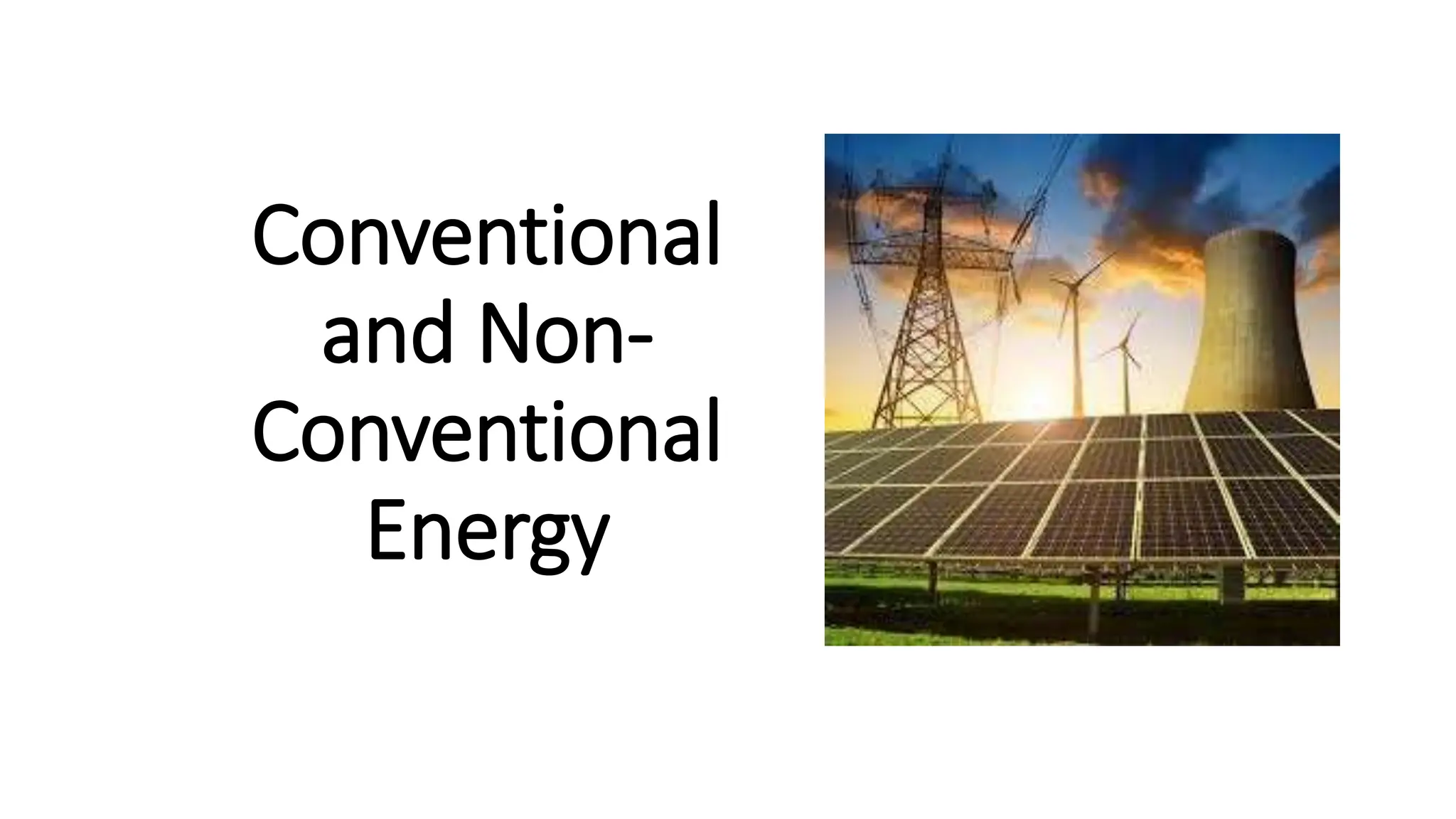The document discusses conventional and non-conventional energy sources, explaining their definitions, advantages, and disadvantages. Conventional sources, such as fossil fuels and nuclear power, are non-renewable and have significant environmental impacts, while non-conventional sources, like solar and wind energy, are renewable and environmentally friendly but may have limitations in terms of reliability and cost. Ultimately, the document emphasizes the need for a shift towards non-conventional energy sources to sustain energy demands and mitigate environmental issues.








